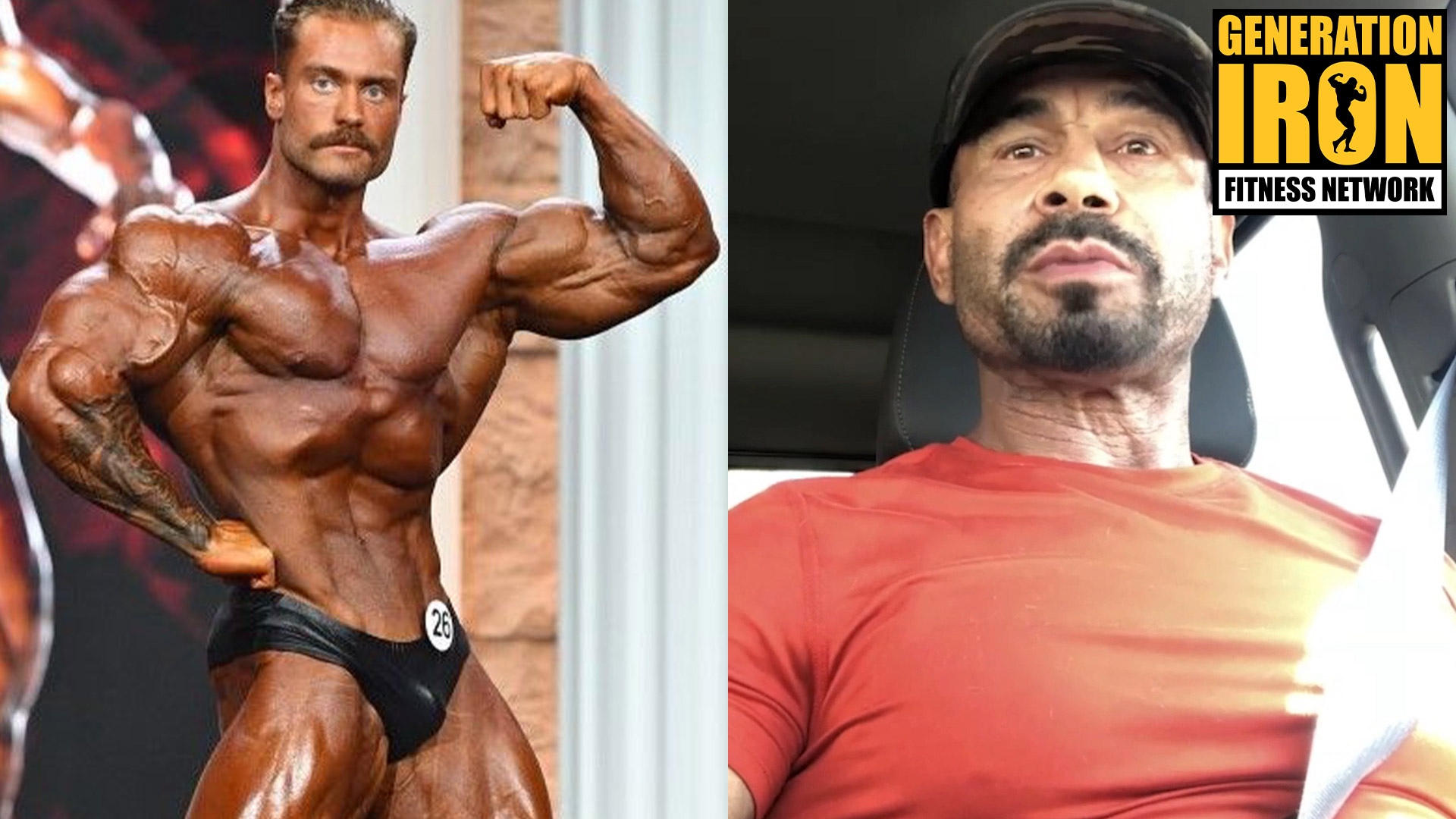
Danny Hester: Chris Bumstead Won Olympia Due To Improvements But Not Perfection
Danny Hester believes that Chris Bumstead’s physique was very close to Breon Ansley – but it was his massive improvements that earned him the win.
Chris Bumstead vs Breon Ansley was one of the most hyped up battles of the Classic Physique Olympia 2020. Ultimately, Chris Bumstead solidified his status as champion with a second win. Surprisingly, Breon Ansley fell down to third place. But Danny Hester believes that Bumstead and Ansley’s physiques were actually very close in quality. What made the difference was Bumstead’s massive improvements since last year.
The same can be said of Terrence Ruffin, who slipped up into second ahead of Breon Ansley. These three competitors were neck and neck. It’s Danny Hester’s belief that comparisons to previous years and how much they each improved decided the ultimate placings. In our latest GI Exclusive interview, Danny Hester explains how judges consistently reward improvements – and that’s the main reason Chris Bumstead won Olympia 2020.
Danny Hester wants to make one thing clear during our latest interview segment. When a bodybuilder competes on stage, they are being not only compared to the other competitors but also their past self. Pro bodybuilding and judges cannot help but be somewhat subjective. Despite scores and a set of guidelines to follow – judging a physique will always be skewed by subjective opinion.
That’s why there are multiple judges on the panel instead of just one. To help bring in a consensus among multiple perspectives. Danny Hester also believes that comparisons to previous competitions also helps keep the judges guided. That it’s an unwritten guiding principle with scoring. If a bodybuilder shows incredible improvement from one competition to the next – the judges take notice. That affects the overall score and placing.
[embedded content]
Watch our GI Exclusive segment with Danny Hester above!
Danny Hester doesn’t give his personal opinion on who had the best physique at the Classic Physique Olympia 2020. But he does suggest that the physique quality was very close between Chris Bumstead and Breon Ansley.
“Now even with the improvements, was it enough for him [Chris Bumstead] to beat Breon? That’s a whole different story,” Danny Hester states in our interview. While not confirmed -this seems to imply that Hester doesn’t view Bumstead’s physique as breakaway superior from Ansley.
He does understand, and truly believes, that Chris Bumstead won purely on his vast improvements. Hester himself gives Bumstead credit. He admits that the amount of improvements in Bumstead’s physique from the Olympia 2019 to 2020 was incredible. It’s hard for any pro bodybuilder to get that kind of improvement in one year. Bumstead pulled it off. The judges noticed. That gave Bumstead the edge.
Danny Hester relates this to his experience competing. He recalls a competition he competed in just three weeks before winning the Classic Olympia. He placed third due to feeling slightly sick on the night of the show. He was frustrated. So he worked extra hard in the final three weeks leading up to Olympia.
Ultimately, he won the Classic Physique Olympia. He thinks this is partially due to the extra effort he put in after feeling defeated. But he also thinks it’s because some of the same judges were at the earlier show and also judging at Olympia. They saw his improvements. They directly noticed how he changed. That helped him get an edge and win that year.
So what does that mean for Chris Bumstead going into 2021? There are always improvements to be made – but can he surprise with such vast improvements like the year before? And if he can’t will it be enough for him to stay on top? Only time will tell. Perhaps Breon Ansley will be the one to bring in improvements and get the edge.
You can watch Danny Hester go into more detail about his thoughts of the Classic Physique Olympia results by watching our latest GI Exclusive above!
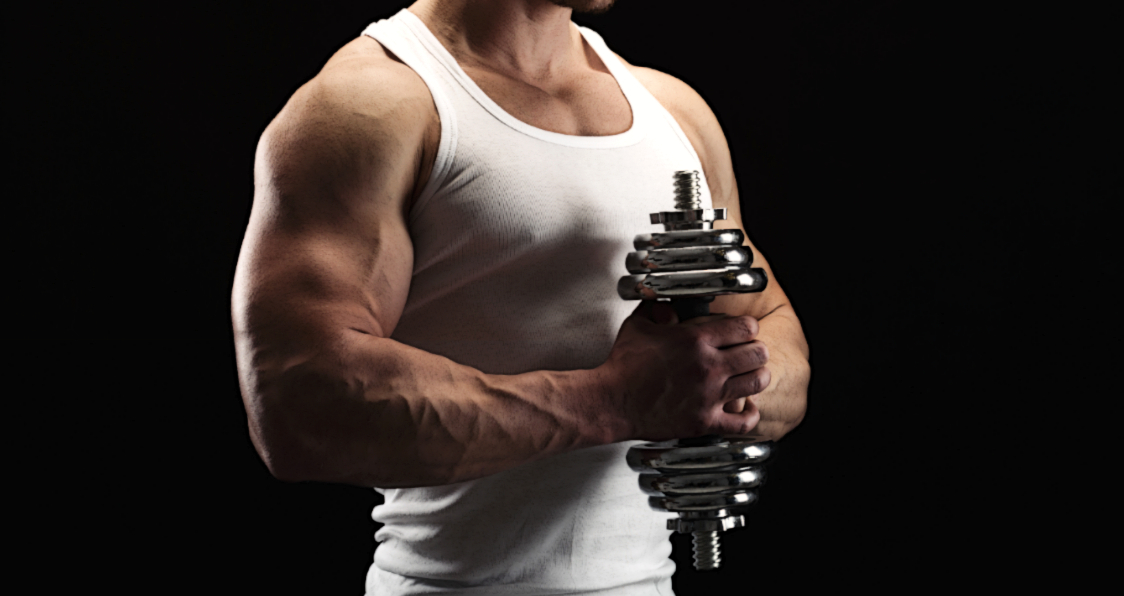
7 Ultimate Training Tips For Developing Forearm Size
Building The Forearms for Fuller Looking Arms
When looking to build significant muscle size, training tends to focus on developing large muscles groups such as the glutes, quads, lats, pecs and delts.
While the arms do often receive a lot of attention too, the focus is predominantly on the muscles of the upper arm – the biceps and triceps.
As a result, the forearms can be neglected and therefore can under-develop in comparison to other areas.
It is important to build size and definition in the forearms in order to develop full-looking arms that matches your overall physique.
The general approach to forearm building is to concentrate on forearm isolation exercises for the forearm flexors and extensors – exercises such as wrist curls.
While these types of exercises can certainly allow for forearm growth, there are a number of other methods that can be employed to accelerate the rate of development.
The 7 Tips For Big Forearms
If you are serious about building size in the forearms, adopt a number of the following 7 tips and look to incorporate them into your training program.
1) Ditch the Straps
Wrist straps can be an excellent training tool which eliminate the detrimental impact of failing grip strength by securing the bar to the hands (1).
With exercise like the deadlift, failing grip strength can cause the individual to cease exercising before they reach absolute muscular failure.
Adding wrist straps will provide a much securing grip on the bar and allow the performer to work through to muscular failure without the grip slackening and failing.
However, when it comes to building size in the forearms, leave the straps in the locker room.
During all pulling exercises, you hold the bar by wrapping the fingers and thumbs tightly around the equipment your using, otherwise it will fall out of your grasp.
The extrinsic muscles of the forearms must work hard to maintain a secure grip throughout the duration of the exercise (2). Over time, these muscles will improve in strength and increase in size.
Furthermore, the heavier the load lifted, the more the forearms flexors must engage. Therefore, when lifting heavy, forget using straps in order to get maximize forearm activation.
There are a number of common pulling exercises that are excellent for forearm development and grip strength – exercises such as the deadlift, barbell row, and chin-ups.
Pushing exercises, such as the bench press and overhead press, are also effective forearm extensor developers – however, pulling exercises are superior for forearm engagement.
2) Grip Hard
Leading on from the last tip, it may be the case that you want to work the forearms but do not want to forgo using wrist straps.
This is absolutely fine. It is still possible to work the forearms effectively while still using the straps.
Here are two methods that are particularly useful for really pumping up the forearms.
Grab a barbell, place it on a power rack and load it up. Grip tightly and look to hold it at arms length for approximately 30 – 60 seconds.
It is also possible to this with dumbbells too. Select two heavy dumbbells, secure your grip and hold, again for 30 – 60 seconds.
Look to repeat this 8-10 times to really get the forearms burning.
3) Utilize Cables
As mentioned earlier, one of the most common forearm exercises is the wrist curl and reverse wrist curl. Barbells and dumbbells are most frequently used with this exercise.
However, the cables may be a better choice when it comes to wrist curls. This is because the cables maintain tension throughout the entirety of the movement.
This places an even greater demand on the wrist flexors and extensors and which may lead to a more efficient development of the forearms.
For the cable wrist curl, attach a short bar to the cable and adjust the pulley to the lowest position. Using D rings for this exercise is also acceptable.
In a kneeling position, place the forearms on the knees and use the thighs like a preacher bench. If preferred, set up a preacher bench in front of the cable machine instead.
Focus on flexing and extending the wrist only and perform the prescribed number of reps. It may be of greater benefit to focus on one wrist at a time rather than both simultaneously.
4) Go Old-School
You don’t need the latest fitness equipment to work the forearms effectively. In fact, there are a number of excellent forearm exercises that use basic kit.
One of the simplest exercises uses a dowel and a length of string. Insert the string through dowel, attach a weight to the string and the look to turn the dowel round and round to bring the weight up.
Once the weight has risen up to the dowel, unravel the string by gradually turning the dowel back and lowering the weight to the floor once again.
The hand gripper is another example of another basic piece of forearm developing kit. You can buy hand grippers with a range of grades.
Some take 60 pounds of pressure to close whereas others can be as high as 360 pounds of pressure! Be aware, this exercise is a lot more challenging than it looks.
5) Increase Wrist Training Frequency
The forearms are made up of dense muscle tissue which can be a little more resistant to change. Therefore, training them more often is crucial to facilitate size improvements.
Furthermore, research indicates that one of the most effective methods of promoting muscular hypertrophy is to increase the frequency of training (3).
Therefore, if looking to accelerate forearm hypertrophy, consider performing forearm orientated exercises more regularly – perhaps as much as every second day.
Be careful not to schedule forearms into your training the day before performing back and biceps. Having sore forearms when performing pulling exercises may negatively impact your performance.
6) Use a High Rep Scheme
Typically, for hypertrophy, a rep range of 6-12 reps will suffice. However, for forearm training, it is recommended to aim a lot higher than that.
Aim to complete high rep sets with a minimum of 15 reps. Feel free to experiment with rep ranges utilizing anything between 15 – 50 reps per set.
Many individuals believe that completing high reps does not positively impact the rate of muscle growth. However, high reps have been found to be beneficial when it comes to hypertrophy (4).
7) Consider Loaded Carries
Finally, it may be worthwhile adding in heavy carry exercises into your training – exercises such as the dumbbell farmers walk.
Not only will these type of exercises place a great demand on your grip strength and forearms, they are also very simple to set-up and execute.
For the dumbbell farmers walk, all that is required is a clear space and a heavy load. Simply pick up the load and take a number of steps forward while keeping the weight tight to the body.
Keeping going until the grip gives in and forces you to stop. Over time, gradually add more load to continuously challenge the forearms and force them to adapt.
Final Word
While wrist isolation exercises are very useful for developing forearm size and strength, there are a number of other strategies that can be adopted to bring about substantial growth.
Consider utilizing a number of the aforementioned forearm tips to your training, train hard, be consistent and over time, the forearms will noticeably grow causing the arms to look comprehensively bigger and fuller.
For more news and updates, follow Generation Iron on Facebook, Twitter, and Instagram.
References:
1-Coswig, Victor S.; Machado Freitas, Diogo Felipe; Gentil, Paulo; Fukuda, David H.; Del Vecchio, Fabrício Boscolo (2015-12). “Kinematics and Kinetics of Multiple Sets Using Lifting Straps During Deadlift Training”. Journal of Strength and Conditioning Research. 29 (12): 3399–3404. doi:10.1519/JSC.0000000000000986. ISSN 1533-4287. PMID 26595133
2-Mitchell, Brittney; Whited, Lacey (2019), “Anatomy, Shoulder and Upper Limb, Forearm Muscles”, StatPearls, StatPearls Publishing, PMID 30725660
3-Ochi, Eisuke; Maruo, Masataka; Tsuchiya, Yosuke; Ishii, Naokata; Miura, Koji; Sasaki, Kazushige (July 2, 2018). “Higher Training Frequency Is Important for Gaining Muscular Strength Under Volume-Matched Training”. Frontiers in Physiology. 9. doi:10.3389/fphys.2018.00744. ISSN 1664-042X. PMC 6036131. PMID 30013480.
4-pubmeddev. “Effects of Low- vs. High-Load Resistance Training on Muscle Strength and Hypertrophy in Well-Trained Men. – PubMed – NCBI”. www.ncbi.nlm.nih.gov.
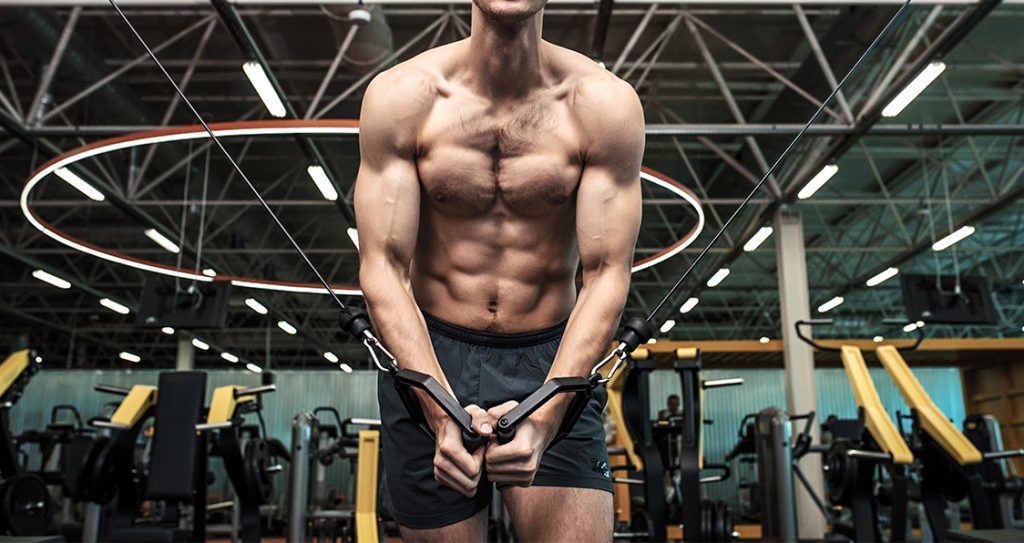
4 Reasons Why You’re Getting Weak
Past the point of diminishing returns
We Know you guys go hard. Lifting day in and day out, monitoring your macros, taking your supps, and pushing yourself to the limit in the gym. However, there’s a point of diminishing returns. If you’re doing “everything right” but find yourself getting weaker or stuck on a plateau, something’s up. While there are a myriad of reasons things could be going south with your gains, here are some of the most common mistakes that may be giving you less than ideal results.
Your workout schedule is too strict
Yep, you guessed it. One of the number one reasons you’re not getting enough mass is because you’re probably “doing the most”. Chill, you’re on your way to a mental and physical breakdown. If you find you’re not reaching your goals as fast as you’d like try taking a week off *gasp, the room goes silent*. Seriously though, you can still stay active and fit just take a sabbatical from the weight room. It’s okay, we won’t tell anyone.
The order of your exercises are wrong, wrong, wrong.
Going to failure with chest fly’s and dips is an almost sure fire way to decrease your chest press performance later on in your routine. The order of your exercises greatly predict how much strength and energy you’ll have left for secondary movements. Try putting the most important or large muscle group exercises (bench press. deadlift, squat, etc.) first and leave the accessory movements for later. That way your body will be ready to push out some huge numbers.
Your form is tore up from the floor up
When know you want to add weights. You want to post your squat numbers on facebook, instagram, snapchat, and every form of social media there is. Unfortunately for your gainz, that’s not going to work. Just like a leaky basement, if you’re foundation is wrong you’re all sorts of messed up. You can get away with this at lighter weights, but once you start to get with the big boys, your cracks will start to show. Take some weight off the bar and practice perfect form. Also, focus on a mind-muscle connection that lets you truly feel which parts of your body is most affected by a particular exercise. This will automatically have you thinking about the way your shoulders are positioned for a bench press or engaging your lats during a deadlift.
Your recovery plan is flawed
What’s that? A recovery plan involves more than just a shake? Sadly, yes. If you’re going to break down those rock formations you refer to as muscles and expect to comeback with the strength (and size) of hercules you’re going to need some rest. But this doesn’t necessarily mean sit and the couch and watch football rest. You can do things like foam rolling, stretching, and light cardio to encourage blood flow and loosen up tight muscles.
There you have it. 4 arch nemesis’s of hard earned gainz. Try making these 4 tweaks to your already stellar workout and watch your strength and size increase in proportion to the work you’re putting in.
Hit us up in the comments section below. What other problems do you feel everyday bodybuilders face in reaching their goals?
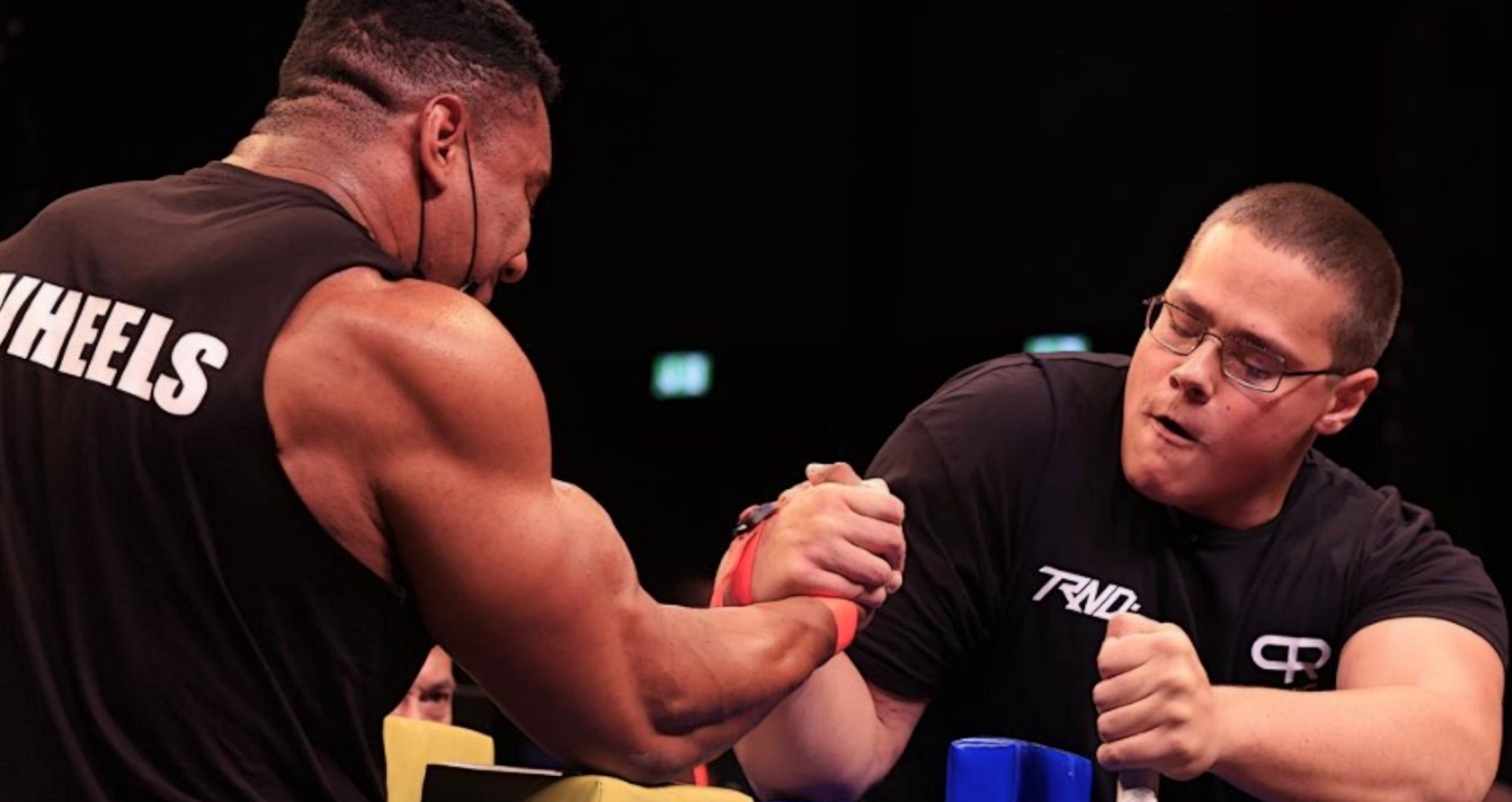
Taken to School: Larry Wheels is Defeated by Schoolboy in Arm Wrestling Match
Larry Wheels battles Schoolboy in recent arm wrestling super match.
The much anticipated arm wrestling super match between Larry Wheels and Schoolboy saw the strength athlete take a loss. The two have battled in the past, Larry being defeated in their first meeting. Since then the strength athlete prepped for a rematch. However it would prove to be futile.
A professional arm wrestling for some time now, Aleksandr “Schoolboy” Beziazykov has proven to be a force to be reckoned with. Defeating other grown men left and right in arm wrestling, Schoolboy has cemented himself as one of the best arm wrestlers on the circuit. With a ton of room for growth, Schoolboy is sure to give many competitors all they can handle.
Larry Wheels and Schoolboy faced off on May 28, the both of them poised to prove who was the superior arm wrestler. Both competitors agreed to a right arm battle for the event. While Larry Wheels showcased some great strength, Schoolboy still proved to be too much for the Strength Wars star.
While Larry Wheels may have lost the official match, apparently he and Schoolboy had another match behind the scenes. This one took place before the event and both agreed to use their left hands. According to reports, Larry Wheels won the matches, showing that he still has some considerable strength.
That said, it’s all about the official record. From what we could see, Schoolboy was able to assert himself as the better man in arm wrestling. Larry Wheels certainly has proven himself to be one of the most adventurous strength athletes in the game today. That said, no one can be the absolute best at everything. But Larry showed that he has the kind of strength that can translate well over to many different arenas.
The Full Match
Larry Wheels took it upon himself to post video of the match on his YouTube channel. While it was clear that though Schoolboy was superior, Larry Wheels still showed some impressive ability for a sport that isn’t his forte. Check out the match here.
What do you think should be the next challenge for Larry Wheels?
For more news and updates, follow Generation Iron on Facebook, Twitter, and Instagram.
Managing Editor at Generation Iron, Jonathan Salmon is a writer, martial arts instructor, and geek culture enthusiast. Check out his YouTube, Instagram, Twitter, Facebook, and Sound Cloud for in-depth MMA analysis.
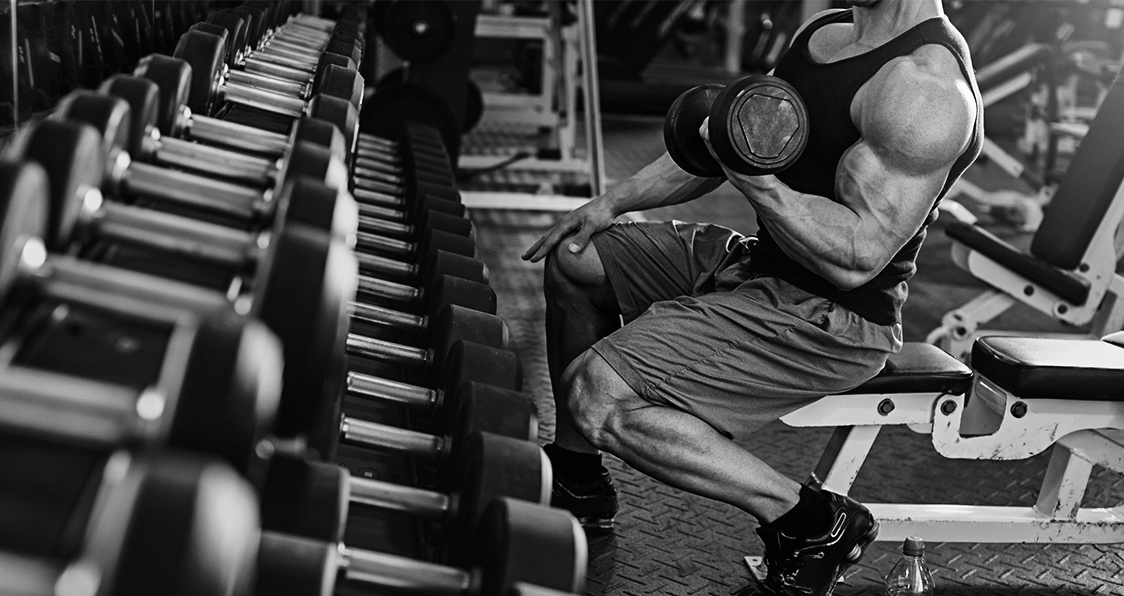
6 Forgotten But Incredibly-Effective Exercises Which Need To Be Brought Back
Reliving the Golden Days
The beautiful sport of bodybuilding has evolved with time. Machines, juices, and glamour have taken over the bodybuilding world. Don’t get us wrong, we are not complaining, and neither is this article meant to compare the current bodybuilders with the good old days. We’re here to talk about the six forgotten exercises that need to be brought back for bodybuilding’s sake.
With the emergence of the online fitness scene, we see a lot of “influencers” posting their workouts online. We can’t help but notice how different their workouts are from the typical old-school training routines.
It’s almost as if the workout vanity is as important as the physiques that are a result of it. Now, there is nothing wrong with that but we miss watching nasty bodybuilders grunting through their workouts in pain, sweat, and sometimes even blood.
We have put together a list of exercises that were a hit with the golden-age bodybuilders but have now faded with time. Make these exercises a part of your exercise arsenal if you love the golden-age aesthetics as much as we do.
6 Forgotten But Incredibly-Effective Exercises Which Need To Be Brought Back
Bench Tricep Dips
Imagine a sunny day in LA, and now picture yourself in a bare-bone gym in California surrounded by jacked dudes sporting staches, wearing tank tops and short shorts. Yep, we just narrated a scene out of the legendary documentary – Pumping Iron, and this is going to the theme of the article.
The triceps are an overlooked muscle. They don’t get the same love as their siblings – biceps. When people think “arm training” they usually picture themselves curling heavy dumbbells. Hardly anyone imagines themselves performing skullcrushers when arm training is brought up.
The bench tricep dips are on the verge of extinction and need to be rescued.
Steps:
Place your hands at a shoulder-width distance on a bench and lockout your elbows.
Your arms should be perpendicular to the floor at the top of the movement.
Extend your legs until your upper legs are parallel and your lower legs are perpendicular to the floor.
Place your feet flat on the floor.
Slowly lower your upper body until your chest reaches bench height.
Return to the starting position with an explosive movement and repeat for the recommended reps.
Modification: If you find this exercise too easy, you could add resistance by keeping your feet on an elevated platform or do what Arnold did – place a few weight plates on your lap and knock out the reps until the horseshoe muscles pop out at the back of your arms.
Barbell Wrist Curls
A few more years and you’ll only see people perform the barbell wrist curls in old bodybuilding videos or if a bodybuilding museum opens up someday. Forearms, these days, are considered nothing more than accessory muscles. People slap on a couple of fatgrips on their dumbbells or barbells and call it a day.
Steps:
Keep your forearms and elbows flat on a bench while holding a barbell with an underhand grip.
Curl the barbell using your wrists and pause at the top of the movement for a couple of seconds.
Return to the starting position and repeat for the desired reps.
Mod: While holding the barbell with an underhand grip targets the sides of the forearms, grabbing the bar with an overhand grip will work the top of your forearms. Don’t let your ego get the better of you while performing this exercise. Use weights you’ll be able to follow a full range of motion with.
Donkey Calf Raises
Back in the day, hitting the gym was about training with buddies. These days, machines and Instagram have consumed the roles of training partners. Most people like working out on machines in isolation.
We would recommend performing the donkey calf raises with people on your back as it adds a new dimension to your training – stability. Aesthetics are fine but you should also focus on training for functionality. Donkey calf raises ranks high on the list of forgotten exercises that need to be brought back.
Steps:
Place your toes on an elevated platform.
Bend over at your hips so that your upper body is taken out of the equation. It’s best to perform this exercise near a bench press or a smith machine as you’ll have something to hold on to.
Ask your training partner to hop onto your back while you perform the calf raises with a full ROM.
Hold and squeeze the life out of your calves at the top of the exercise.
Cross-Bench Dumbbell Pullovers
Dumbbell pullovers are one of the best exercises for building a V-tapered back, and yet only a few people consider adding them to their training routines. Performing the cross-bench dumbbell pullovers with a strict form will help open up your rib cage and add muscle mass to your lats.
Steps:
Lie down on a bench with your shoulder placed on the pads.
Grab a dumbbell with both your hands over your chest.
While keeping your elbows locked out, slowly lower the dumbbell until it is a few inches off the floor.
Return to the starting position and repeat for the recommended reps.
Keep your hips low to the ground and make sure you don’t lift them while you’re performing the exercise.
Arm Blaster Curls
The arm blaster curls have to be one of the most badass bicep exercises of all times. We still don’t understand how it lost its charm with time and ended up on a list of forgotten exercises. If your gym doesn’t have an arm blaster, add one to your gym bag, and your arms will thank you later.
Steps:
Adjust the arm blaster so it fits snugly under your chest.
Place the back of your elbows on the pads and grab a barbell while your arms are fully extended in front of you.
Curl the barbell by bending at your elbows with a strict form.
Only your lower arms should move while your upper arms stay in place.
Roman Chair Situps
How often do you see the current Mr. Olympias train abs on a Roman chair? Back in the day, a Roman chair was a staple in an ab training routine. The Roman chair situps can be much harder than normal crunches as it requires a lot more control from your stabilizers and a strong core.
Steps:
The Roman chairs usually have a lot of moving parts so you’d want to have the roller height and seat distance adjusted right.
Once you’re in position, place your hands on your chest or behind your head.
Slowly lower your torso backward until you’re at least parallel to the floor.
Return to the starting position with a slow and controlled motion.
Mod: You could make the exercise harder by adding resistance to the mix. Hold a dumbbell or a weight plate in front of your chest and perform the exercise to failure.
Do you use any of these forgotten exercises in your workout schedules? Let us know in the comments below. Also, be sure to follow Generation Iron on Facebook and Twitter.
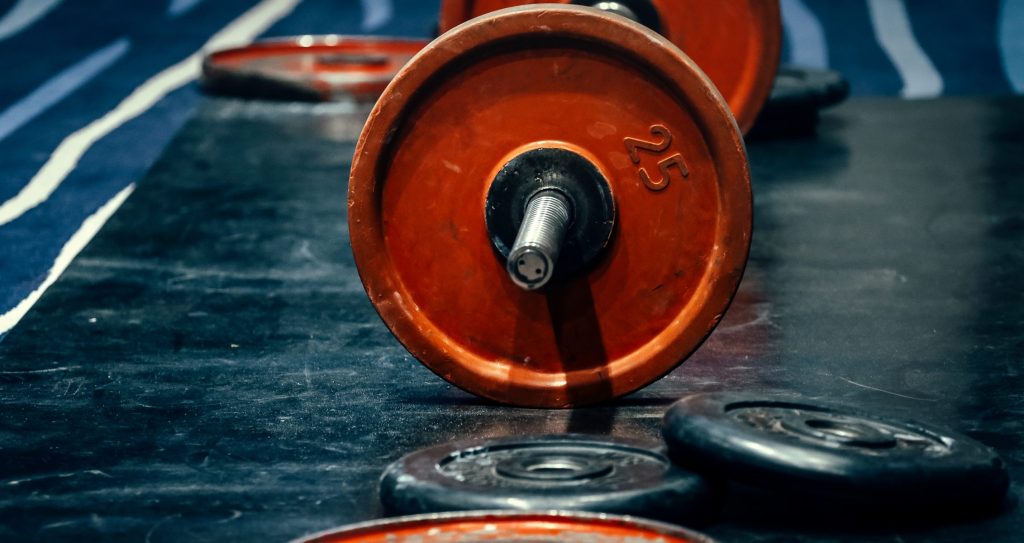
4 Reasons You Should Have a Deload Week
The Importance of a Deload Week
If you’ve been following the same training protocol and no matter how many tweaks and adjustments you make to your training plan, nutrition, and sleep, you still can’t break past plateaus, you may want to try adding a deload week to your program.
Many people make the mistake of continuously pushing themselves and pushing harder when they reach a plateau, but the reality is that you’ll want to do the opposite and push yourself less. Giving your body a break from the taxing effects of doing a lot of volume at a high intensity is sometimes just what it needs to hit new personal records (PRs) and continue to build the body that you want.
Below, you’ll learn all about what a deload week is and the reasons you should start including them in your training plan.
What Is a Deload Week?
Rest is important for your body and muscles to grow and get stronger. Of course, one way you can rest from working out is by completely taking time away from the gym and being a couched potato in general. However, there are slightly more productive approaches that will have you burning calories and giving you all the other benefits of exercise without having to give up on moving completely.
For one, you can partake in your favorite physical activities, including swimming, hiking, biking, rowing, basketball, etc. This is known as active recovery. Although you won’t be giving your body a complete rest day, which is still important, you’ll be giving your body a break from weightlifting so that your muscles can grow.
Outside of playing different sports, you can follow a method that still allows you to do the exercises and work your muscles in your training plan. This is known as a deload week.
Simply put, you’ll still do the same workouts that you normally do, except instead of pushing yourself on weight and reps, you’ll reduce the workload you do.
4 Reasons to Deload
1. Better Rest and Recovery
Your muscles don’t grow while you’re lifting, they grow while you’re resting. And while taking full rest days — where you do no activities that day — are important, having some weeks that are less intense than other weeks is important as well (1). When you lift weights, you place a lot of stress on your central nervous system (CNS) and muscles. Lifting weights well-rested will allow you to lift the most weight you’re capable of, which will continue to get you stronger and build you muscle. Whereas always lifting weights in a fatigued state won’t allow you to push yourself at your highest capability each workout, hampering your total strength and muscle growth.
2. Hit New PRs
Since you’ll be able to push yourself harder each workout when you’re fully rested and full of energy, you’ll be able to explode your lifts and hit new PRs on movements, including barbell bench press, barbell squats, lat pulldowns, and barbell bicep curls.
This study from the Journal of Strength and Conditioning Research found that collegiate athletes who followed autoregulatory progressive resistance training — increasing or lowering weight based on how they felt — gained more strength than following a linear progression model — a set increase in intensity and weight from week to week (2).
3. Improve Your Joint Health
Resistance training is healthy for your joints, however, doing too much weightlifting can be detrimental to your joint health. Giving your muscles, bones, and joints, a rest from external stimulus can improve your joint health and keep them strong long-term (3).
Adding a deload week to your training plan will reduce your chances of injury and your joints will feel stronger and you’ll have fewer tweaks you’ll have to worry about that may prevent you from using heavier weights.
4. Reduced Stress
Overtraining can decrease your testosterone and increase your cortisol — your stress hormone — which negatively affects your muscle growth and overall health. Taking some time off to allow your body to rest up and reset can prevent this (4).
Weight training and pushing your physique to new heights places a lot of stress on your mind and body, and allowing yourself some time with less volume at a lower intensity can give your mind and body the reduction in stress it needs to increase your lifts when you go back to your normal intensity and volume.
How to Deload
There’s no cookie-cutter method of doing this, but in general, you’ll be using much lighter weight and doing fewer sets.
The best way to do this is to cut back 1-2 sets for each exercise and reduce the weight you use by 40-60% of what you would normally do. With this method, you can still do the same number of reps you usually would do, you’ll just be doing much less volume and intensity.
How Often Should You Deload
There is no set amount of time or cycle you’ll want to follow to do this. It’s best to listen to your body. For example, if you’ve been stuck at the same weight for a while or are feeling extra fatigued, that would be a good time to incorporate a deload week to give your body a break and let it reset. However, it’s recommended that you deload once every 6-12 weeks, depending on each individual and athlete. For example, a powerlifter who is pushing themselves with more intensity and volume should take a deload week more often than an average gym-goer who is pushing themselves at a lower intensity.
Conclusion
When your body stops growing and getting stronger, or you’re feeling fatigued and exhausted from your training plan, adding a deload week can be just what you need to push past plateaus and give your body the rest and reset it needs to continue on its path to building your desired physique.
A deload week improves your rest and recovery process, helps you hit new PRs, improves your joint health, and reduces stress.
Have you ever tried a deload week before? If so, let us know how it went in the comment sections below. Also, share this article on social if you think other people will get value out of it.
References
1 – Cheng, A. J., Jude, B., & Lanner, J. T. (2020). Intramuscular mechanisms of overtraining. Redox biology, 35, 101480. https://doi.org/10.1016/j.redox.2020.101480
2 – Mann, J. B., Thyfault, J. P., Ivey, P. A., & Sayers, S. P. (2010). The effect of autoregulatory progressive resistance exercise vs. linear periodization on strength improvement in college athletes. Journal of strength and conditioning research, 24(7), 1718–1723. https://doi.org/10.1519/JSC.0b013e3181def4a6
3 – O’Brien M. (2001). Exercise and osteoporosis. Irish journal of medical science, 170(1), 58–62. https://doi.org/10.1007/BF03167724
4 – Flavio A. Cadegiani, Claudio E. Kater, Matheus Gazola. (2019) Clinical and biochemical characteristics of high-intensity functional training (HIFT) and overtraining syndrome: findings from the EROS study (The EROS-HIFT). Journal of Sports Sciences 37:11, pages 1296-1307.
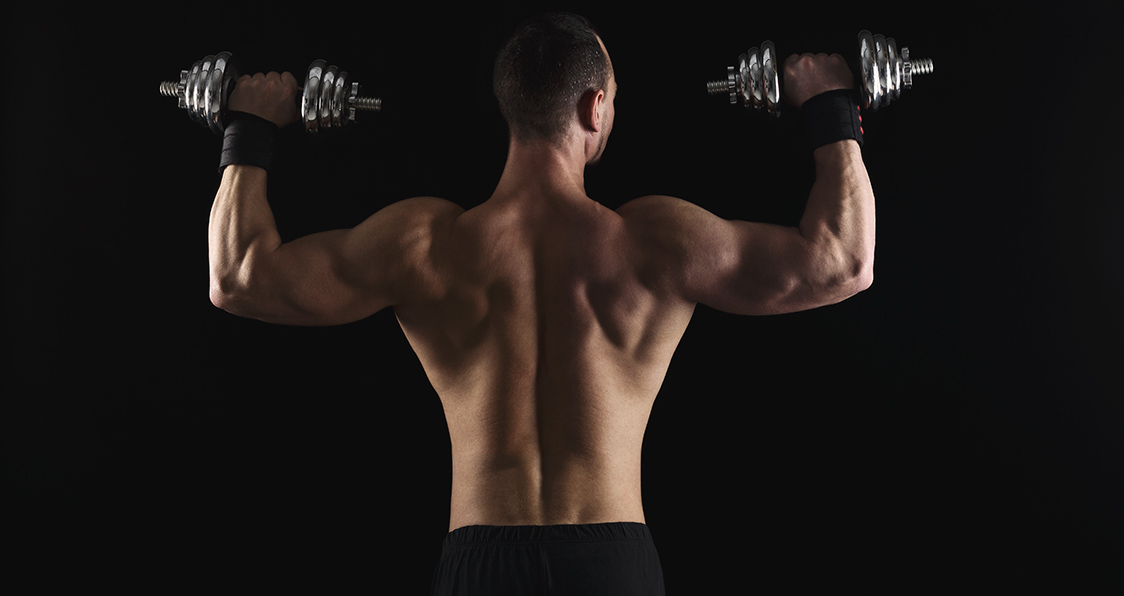
6 Best Exercises For Building Boulder Shoulders
Build Broad Shoulders With These 6 Exercises
“Broad shoulders don’t look nice,” said no one ever. Shoulders can be one of the hardest muscle groups to develop. Only a few people follow the right training routine to achieve big shoulders.
You need to follow a holistic approach in your training to achieve shoulders which look like massive boulders. Building round and big shoulder take much more than performing a few shoulder presses.
Arnold Presses
Arnold presses are one of the best shoulder exercises for overall shoulder development. Named after the Governator himself, the exercises can help in building round shoulder caps which look like the top of football helmets.
Sit on a chair while holding a dumbbell in each hand with a supinated (palm facing inwards) grip. At the beginning of the movement, hold the dumbbells at your shoulder level while keeping your elbows bent.
Rotate your arms as you lift the dumbbell over your head. Your palms should be facing forward at the top of the movement. Rotate your palms to the starting position as you lower the dumbbells.
Dumbbell Front Raises
The dumbbell front raises primarily work the anterior deltoids. The exercise helps in developing the separation between the chest and shoulders. Don’t make the mistake of using momentum by swinging back and forth to lift the dumbbell while performing the front raises.
Hold a dumbbell in each hand at your sides extended at arms length. Your palms should be facing your thighs at the starting position. Elevate your right arm while maintaining a slight bend in your elbow until it’s parallel to the floor. Return to the starting position and repeat with your left arm. Alternate between arms for the recommended reps.
Leaning Cable Side Lateral Raises
Using cables in your workout helps isolate your muscles which can build definition and conditioning. Side lateral raises work the medial delts. Stand beside the cable pulley machine so that your right arm is next to the pulley machine.
Hold the D-bar attached to the low pulley with your left arm. Lean toward your left side and elevate your left arm until it is parallel to the floor. Return to the starting position and repeat for the recommended reps. Repeat on your right side.
Seated Smith Machine Presses
Using a smith machine gets you the best of the isolation and compound movement worlds. Smith machine presses work the medial deltoids while keeping constant tension on your shoulders.
Place a chair under the smith machine bar so that anterior delts are directly under the barbell throughout the movement. Maintain a full range of motion to get the best results while performing all the exercise mentioned in the article.
Chest Supported Dumbbell Rear Delt Raises
Rear deltoids are one of the weakest muscle groups for most people. Since your rear delts are a stubborn muscle group, performing the exercise on an incline bench adds an isolation aspect to better target the muscles.
Adjust the incline bench so that it is forming a 60-degree angle with the floor. Grab a dumbbell in each hand with a supinated (palms facing inwards) grip extended at arms length. Elevate the dumbbells to your sides while maintaining a slight bend in your elbows until they are parallel to the floor. Repeat for the recommended reps.
Barbell Shrugs
Barbell shrugs work your trapezius muscles. Traps are a major muscle group which covers most of the upper back and the posterior of the neck. Shrugs are one of the easiest exercises to perform and yet many people do them wrong.
Hold the barbell with a shoulder-wide pronated (palms facing inward) grip. While maintaining a slight bend in your elbows, lift your shoulder as high as you can without using jerking. Hold at the top of the movement for a couple of seconds before returning to the starting position.
Which is your favorite shoulder exercise? Let us know in the comments below. Also, be sure to follow Generation Iron on Facebook and Twitter.

Best Bodyweight Partner Exercises To Add To Your Workouts
These bodyweight partner workouts are perfect for those with someone to workout with who don’t have access to a gym!
These are challenging times to workout. The current state of everything with gyms closed or open with limited capacity has probably made it difficult for you to find that stable routine you once had. On top of that, the weather is starting to change, that bitter, cold air moving in faster than we may like. Those valuable runs or outdoor activities are dwindling and you may feel stuck with what to do. Working out at home can be a challenge and we fully understand the struggle of balancing your busy life and your workouts especially with no gym to escape to.
If you have a partner or workout buddy living with you, thankfully there are some great exercises you can do together! Keeping you both on a routine promotes a healthier lifestyle overall, both physically seeing gains and staying mentally sharp during these challenging times. Plus, it is more fun to work out with somebody. If you prefer to workout alone, that is perfectly understandable and we get that, but working with someone can open new doors to exercises, tips, and a great energy that you may be missing out on.
Believe it or not, it is possible to get a good workout in without all the equipment a gym provides. While we get used to grinding in the gym with our favorite machines, maybe its time to switch things up and get a great full body workout in with your partner as the only equipment you need. The right person can keep you accountable and push you to limits you may have not thought possible.
Getting Started
To start, have a conversation with your partner about your goals as well as their goals and work together to achieve them. Any injuries, current or past, sensitive spots, or weight differences can also be discussed to run a safe and efficient workout. While focusing on form and technique together, you both can see great gains with a monster partner workout.
Partner Exercises
Plank With A Clap
Planks are great all around ab builders while also promoting great gains for balance and stabilization as well as low back pain (1). Both you and your partner hold the plank position, keeping your cores engaged with a neutral spine. Facing each other, you can either start a timer or count the claps as reps. While in the plank position, reach your right arm out and clap their left hand as they extend their arm, alternating arms as you go.
Push-Up With A Clap
This is very similar to the plank with a clap but we had to throw this in there. Working your chest, arms, and abs, a push-up is one of those exercises that should be staple in any workout (2). Both you and your partner perform a push-up and clap hands with the opposite arms. Continue alternating for a set amount of time or reps.
Burpees
Burpees are a killer full body workout and that love-hate relationship we have with them may be slightly easier with a partner present. Have your partner lie on the ground flat on their stomach, or they can hold a plank position. Then perform a burpee, jumping over them to the other side as you perform this exercise. The added challenge is jumping over them as opposed to jumping straight up in the air.
Pistol Squat
Pistol squats can be challenging, but with a partner, these exercises become a whole lot easier. Use your partner as support for these. Stand facing each other and join opposite hands, making sure you have a good grip. With one leg off the ground, squat into the sole leg planted firmly on the ground into a one-leg squat. You and your partner will both be performing the exercise and providing balance for each other.
Wheelbarrow Push-Up With Squat
This is an interesting exercise but one you both can have fun with. Your partner will be in a push-up position, but you will hold their ankles at about hip height. Your job is to hold them stable while also maintaining a good, solid squat position. At the same time you will both lower, your partner into a push-up and you into a squat, for your desired number of reps.
Bodyweight Squat
We had to put this in there because the bodyweight squat is a great exercise to perform (3). You can hold one hand to your partners or cross your arms and hold each opposite hand as you both engage in a squat position. With a tight core and flat back, both of you will lower into a squat and control the motion back up.
Side Plank With Rotation And Clap
Side planks can be brutal, but are perfect for your obliques as well as providing balance and promoting good posture (4). You and your partner will be back to back in an opposite arm side plank. Extend your arms at the top and clap hands with your partner, followed by you both rotating down and clapping your hands underneath each other. Keeping a good, stable core is key for this exercise.
Hand Stand Hold
Hand stands can be challenging but are fun exercises to perform for stability as well as using multiple muscles to keep yourself engaged. And you look good doing it! Have your partner help you into a hand stand position, or hop into it on your own if able, and hold for your desired amount of time. Your partner will stand next to you as back-up incase you start to lose your balance. Switch positions and let your partner show off a little.
Wrap Up
Working out with a partner is a great way to be accountable to yourself and someone else while promoting great growth, both physically and mentally. While it can be challenging to get a good workout in, having someone to help you, and someone you can help, can make these more fun and engaging as you seek that desired physique. Give these partner exercises a try and really see the benefits of a great workout.
Let us know what you think in the comments below. Also, be sure to follow Generation Iron on Facebook, Twitter, and Instagram.
*Images courtesy of Envato
References
Gupta, Gautam; Alok, Mayank (2018). “Effectiveness of Plank Exercise in Low Back Pain”. (source)
Contreras, Bret; Schoenfeld, Brad; Mike, Jonathan; Tiryaki-Sonmez, Gul; Cronin, John; Vaino, Elsbeth (2012). “The Biomechanics of the Push-up: Implications for Resistance Training Programs”. (source)
Kritz, Matthew; Cronin, John; Hume, Patria (2009). “The Bodyweight Squat: A Movement Screen for the Squat Pattern”. (source)
Blasimann, Angela; Eberle, Simon; Scuderi, Manuel M. (2018). “Effect of Core Muscle Strengthening Exercises (Including Plank and Side Plank) on Injury Rate in Male Adult Soccer Players: A Systematic Review”. (source)
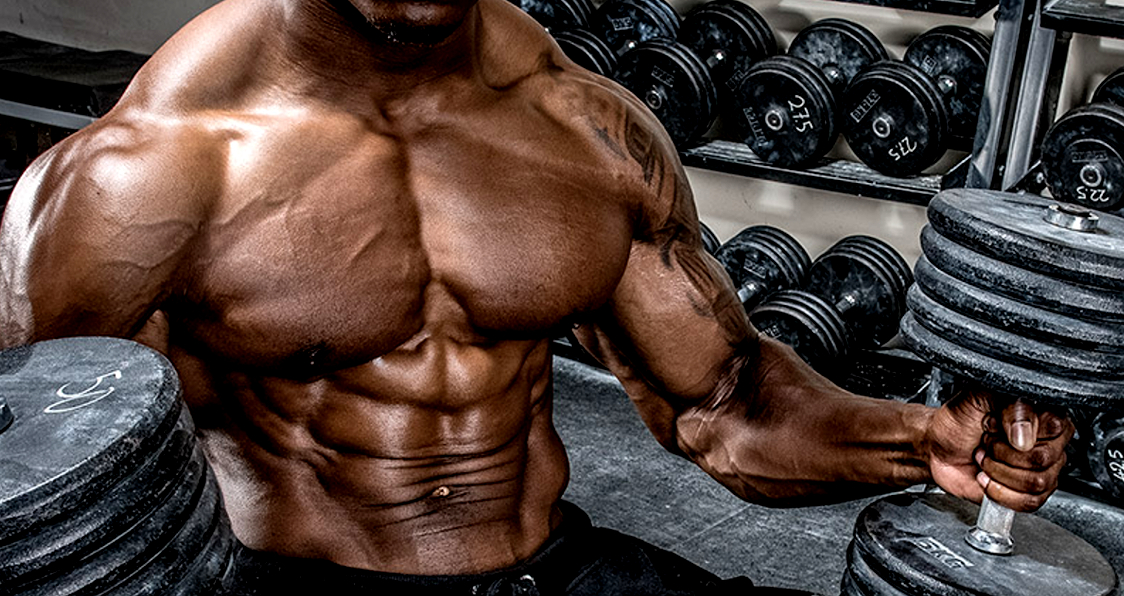
4 Tips On How To Handle ‘Two-A-Days’ To Maximize Your Gains
Two a-days are a practice reserved for those with luxuries of time and strength of spirit.
In this age of increasing amateur fitness, more and more gym-goers are finding excuses to fit workouts in over 7 times a week. Here are some tips to help manage the grueling but rewarding practice of two- a days.
1. Recovery Is King
Of course this always applies, but extreme attention must be payed when doing two a-days. If one is not getting enough sleep or calories, two workouts a day will start to become a detriment rather than a boost. Also, sitting at a desk for 8 hours in between workouts is a recipe for a stiff inhibited body- vulnerable to injury. Extra care must be taken both during off time, and during warm ups/ cool downs to make sure the body is supple and ready to work.
2. Diversify Workouts
Two a-days are not meant to be just an acceleration of an average workout program. Doing a program twice as fast as intended usually means you’re not working hard enough, or the program sucks. Two a-days are beneficial for the individual looking to attack the body in multiple ways.
Cardio workouts are excellent pairings on heavy bodybuilding days, can be done with a variety of machines, and can be anaerobic or aerobic in focus. As far as weightlifting, hitting the same movements multiple times a week can be beneficial, but the law of diminishing returns always looms large.
Make sure you have multiple ways to hit each body part, and that resistance types, set, and rep ranges are altered to constantly provide a new stimulus while allowing for recovery.
3. Have A Goal
Often, the biggest danger of doing two-a-days is becoming confused in routine- making up workouts on the way to the gym, altering workouts senselessly while at the gym, etc. It’s easy to be swept up in the feeling of ‘the grind,’ doing a ton of work without actually having a specific intention behind any of it.
Write down exactly what you want to accomplish and plan around that, or at least use it to orient yourself every day, so that the work, which often becomes monotonous, does not become mindless. Putting in twice the work and not seeing results because the work had no clear purpose can be a damaging psychological blow.
4. Make sure you have the drive.
From my own experience in sports training, often doing two-a-days becomes half-assing two workouts instead of really pushing through one. When one knows that they will have to work out later in the day, it’s easy to take the first workout lightly. This is a nasty habit. Both workouts don’t need to be balls to the wall, but they need to be complete workouts. Don’t delude you’re doing twice the work if you’re really just taking twice the time every day.
How do you prepare for two-a-days?
Let us know in the comments below. Also, be sure to follow Generation Iron on Facebook, Twitter, and Instagram.
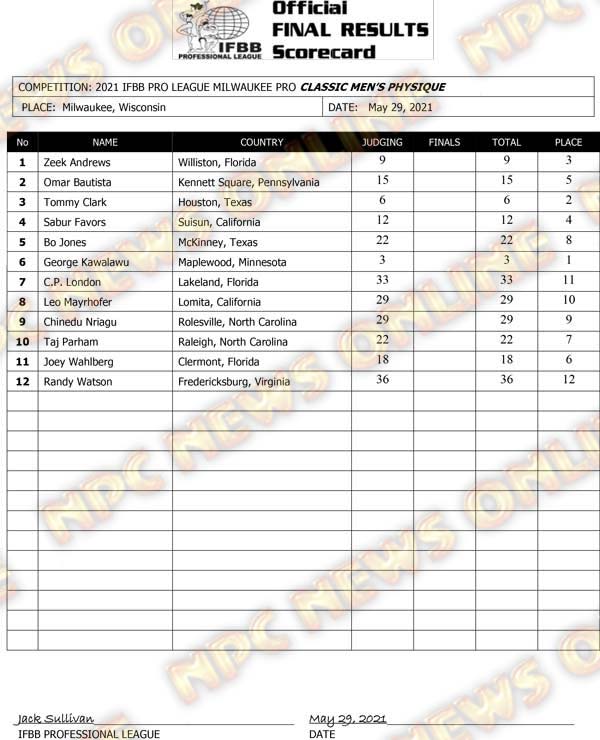
IFBB Milwaukee Pro 2021 Results
Full results for the IFBB Milwaukee Pro 2021.
This weekend held the IFBB Milwaukee Pro 2021 on Saturday, May 29th, 2021. The event took place in Milwaukee, Wisconsin. In the biggest highlight of the night, Pro bodybuilder George Kawalawu won the Classic Physique division. Read on for a full breakdown of the Milwaukee Pro 2021 results.
The Milwaukee Pro 2021 featured four divisions including Classic Physique, Men’s Physique, Bikini, and Wellness. While the first place victor does not receive automatic qualification for the Olympia, the top three earn points towards overall qualification.
The Milwaukee Pro 2021 is one event of many finally going underway after a delayed start to the IFBB Pro season due to the COVID-19 pandemic. With ristrictions lowering in nearly all states of the US, the 2021 season has now moved forward in full force. Though admittedly, both the Arnold Classic and the Mr. Olympia events have been delayed to later dates this year.
The full results have now been announced. Check out our full breakdown of the Milwaukee Pro 2021 results below.
Milwaukee Pro 2021: All Division Winners
A quick breakdown of the winners in each division from the Milwaukee Pro 2021. The top three placing winners earn points towards qualifying or the Olympia 2021 weekend.
Classic Physique: George Kawalawu
Men’s Physique: Rodrigue Chesnier
Bikini: Chenqi Liu
Wellness: Isabelle Nunes
2021 IFBB Milwaukee Pro Breakdown:
Classic Physique Results
First Place – George Kawalawu
Second Place – Tommy Clark
Third Place – Zeek Andrews
Fourth Place – Sabur Favors
Fifth Place – Omar Bautista
Men’s Physique Results
First Place – Rodrigue Chesnier
Second Place – Ismael Dominguez
Third Place – Daniel Stull
Fourth Place – Clarence McSpadden Jr.
Fifth Place – Mehdi Kabbadj
Bikini Results
First Place – Chenqi Liu
Second Place – Alessia Facchin
Third Place – Shelby Pierce
Fourth Place – Carolina Collazos
Fifth Place – Trisha Green
Wellness Results
First Place – Isabelle Nunes
Second Place – Sunny Andrews
Third Place – Renee Harshey
Fourth Place – Devyn Cambre
Fifth Place – Bruna Ferraz
Milwaukee Pro 2021 Scorecards:
Make sure to check out our full IFBB Pro results page from this year and previous years right here to catch up on any action you may have missed!
The GI Team is here to provide top news and original content for the new generation. The generation of bodybuilders who are pushing the sport to bigger and better places. Join The Movement. Become a part of Generation Iron!
